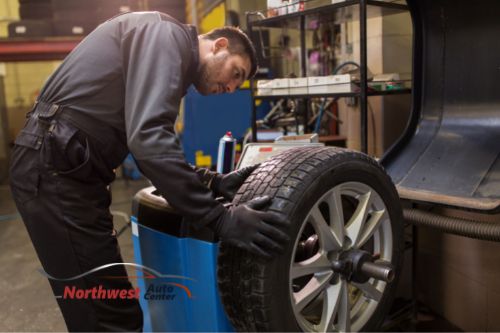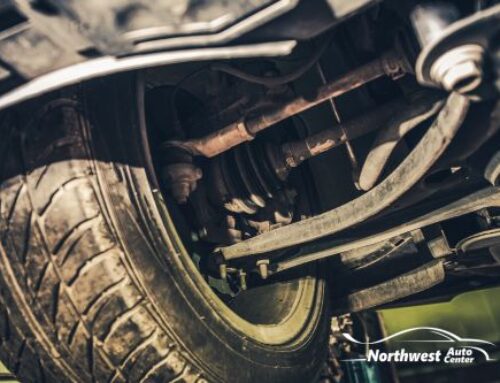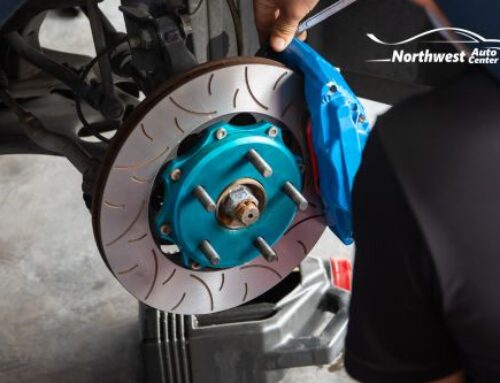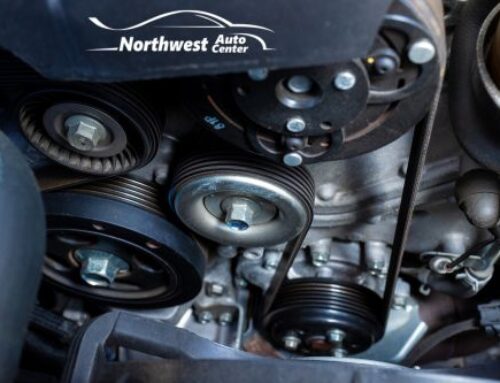Tire balance and wheel alignment are both integral maintenance routines that prolong the life of your tires, yet many drivers don’t know the key differences between the two or what purpose they actually serve.
In short, tire balance has to do with the balance between tires and rims and wheel alignment focuses on the direction or angle that they’re facing. When your wheels come out of alignment or become unbalanced, you’ll begin to notice uneven wear on your tires. For a safer and smoother ride, your wheels should be properly balanced and aligned. You may find that you save money on gas, prevent a costly suspension repair, and avoid having to prematurely replace your tires.

Difference Between Tire Balance and Wheel Alignment
If you’re not a professional mechanic yourself, you may be wondering what the difference between the two is or if they can be used interchangeably. Tire balance and wheel alignment are specifically designed to treat different issues and are in fact two separate procedures.
Wheel alignment ensures that one (or more) tires aren’t causing your car to drift from a straight line due to a misaligned tire. If you notice that you have to pull on your steering wheel to get your car to stay within your lane, this may be a sign that you have a wheel out of alignment.
**SIDE NOTE ** (a tire that has a belt that has slipped can also cause a “pull” in one direction or another).
Even with normal driving habits, tires are prone to coming out of balance every once in a while and this is often felt through vibrations from the steering wheel. At this point, you’ll need to take your vehicle in for your tires to be balanced properly.
Balancing Your Tires
Tire balancing refers to the distribution of weight around your tires. If you’ve opted for economy tires, this can sometimes become an issue due to a substandard level of craftsmanship or it can happen over the course of putting thousands of miles on your tires.
When the tire is thinner in some spots, it naturally leads to uneven wear that can cause damage to your steering and/or suspension parts if they’re not taken in to be properly balanced. As a rule of thumb, your tire balance should be checked when you go in for a rotation — around every 5-6,000 miles.
Once you’re at the shop, the technicians will place your tires on the calibrated balancing machine which spins them around to measure the level of balance. At this point, tire weights can be installed to ensure that the wheel is now balanced all the way around.
Aligning Your Wheels
Cars have a suspension system that controls the angle of your tires and wheel alignment ensures that they’re pointed in the proper direction. If your wheels are pointed at even a fraction of an angle outward or inward, your car may feel like it’s “pulling” in that direction while you’re steering.
Your wheels can have either a toe, camber, or caster misalignment — with a toe misalignment being the most common. A mechanic can inspect your vehicle and then make a recommendation on which type of alignment you require (2 or 4 wheel).
Certain driving habits, such as hitting curbs and potholes, can lead to wheels coming out of alignment and will require more frequent trips to the shop to get them straightened out again. Once proper alignment has been achieved, you may find that you get better fuel economy and don’t have to fight your steering wheel anymore.
Do Your Wheels Feel Imbalanced or Misaligned? Let Us Help!
If you’re feeling vibrations as you’re driving or you’re having to pull on your steering wheel to keep it straight while driving, it’s likely time for a tire balance or a wheel alignment – or perhaps both. We’d love to help over at Northwest Auto Center in Houston and we’ll have you back on the road in a safer and smoother ride in no time.






Leave A Comment
You must be logged in to post a comment.